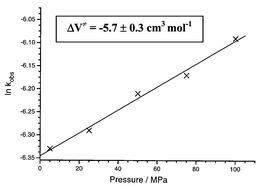Mechanistic insight from activation parameters for the reaction between co-enzyme B12 and cyanide: further evidence that heterolytic Co–C bond cleavage is solvent-assisted†
Abstract
The potential involvement of the

* Corresponding authors
a Institute for Inorganic Chemistry, University of Erlangen-Nürnberg, Egerlandstr. 1, 91058 Erlangen, Germany
b Research School of Chemistry, The Australian National University, Canberra ACT 0200, Australia
The potential involvement of the

 Please wait while we load your content...
Something went wrong. Try again?
Please wait while we load your content...
Something went wrong. Try again?
M. S. A. Hamza, A. G. Cregan, N. E. Brasch and R. van Eldik, Dalton Trans., 2003, 596 DOI: 10.1039/B210068A
To request permission to reproduce material from this article, please go to the Copyright Clearance Center request page.
If you are an author contributing to an RSC publication, you do not need to request permission provided correct acknowledgement is given.
If you are the author of this article, you do not need to request permission to reproduce figures and diagrams provided correct acknowledgement is given. If you want to reproduce the whole article in a third-party publication (excluding your thesis/dissertation for which permission is not required) please go to the Copyright Clearance Center request page.
Read more about how to correctly acknowledge RSC content.
 Fetching data from CrossRef.
Fetching data from CrossRef.
This may take some time to load.
Loading related content
